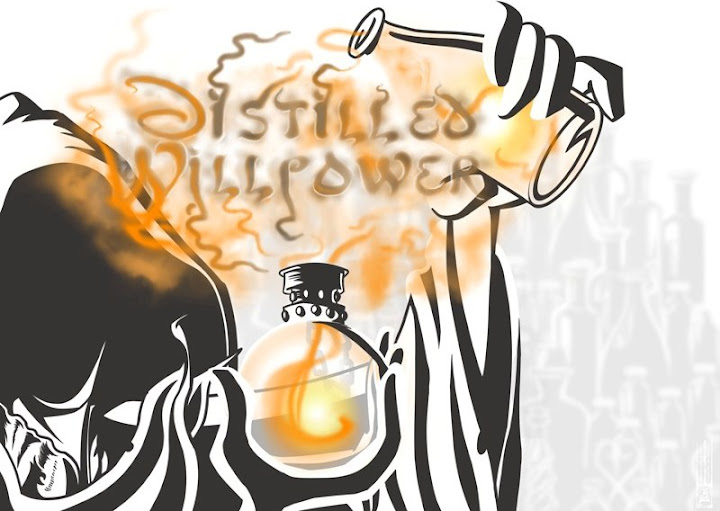Robertson introduced me to a game which, since then, I've played with my friends whenever we've got enough people together in a room. If you have the chance, give the article a read, but I'll describe the rules to you here and hope you can spread the word. The game is called Werewolf.
Now, I understand if you've stumbled across this you might have already heard of the game under a different name, perhaps Mafia (as one of my friends had heard) but I'm lead to believe there are a number of subtle differences and nuances which arise if you play the game correctly, so it might be worth following on regardless. Robertson describes the rules simply as:
Its core premise is simple -- a room is split between villagers and werewolves, and the former aren't aware who are their enemies, determined to eat them. Can the werewolves eat their prey before the villagers identify and lynch the werewolves?Here's a bit more detail:
1) First off, you'll need a decent number of people. The minimum is probably 5, but more is preferable. Each player is assigned a category, in the simplest version either you are a villager or a werewolf. With a group of 5-7 you'd need 1 werewolf, 7-10 probably 2 and more than 11 you'll probably want 3 werewolves. No one other than the person themselves must know who is a villager and who is a werewolf (this is easily done with cue cards for each player - telling them their character). You will also need one narrator who knows everything.
2) The game is split into 2 stages; night and day. During the night, everyone closes their eyes and "sleeps", the narrator asks the werewolves to open their eyes and silently agree on one villager to horribly maul and leave bleeding and spluttering in their fields to die a slow and agonising death before the sun rises. When the deed is done, the narrator asks the werewolves to close their eyes and then announces the morning has arrived and everyone wakes up. The narrator informs the villagers who has been killed and they must sit the remainder of the game out.
3) The entire group must then agree on one person out of them to lynch. The trick is that the werewolves are also allowed to vote, but obviously no one knows who they are, so they must try to convince the villagers that one of their feeble peasants is the bloodthirsty killer. So, with their lynching target agreed upon, the accused is strung up and the narrator informs the group whether they killed a fellow villager or successfully targeted a werewolf. Night falls again and the werewolves are free to choose another to kill.
4) The game continues as such until either all the werewolves are dead (and the villagers win), or the werewolves outnumber the villagers (and the werewolves win).
 Sounds simple enough, right? Right, it is! The rules in and of themselves are simple and straightforward, you can't go too far wrong. However, what happens when you begin to play is something else entirely. You might play one or two day/night cycles before it happens; but it will happen. You will go into "Werewolf Mode" - a state of consciousness where everything is relevant and nothing is irrelevant.
Sounds simple enough, right? Right, it is! The rules in and of themselves are simple and straightforward, you can't go too far wrong. However, what happens when you begin to play is something else entirely. You might play one or two day/night cycles before it happens; but it will happen. You will go into "Werewolf Mode" - a state of consciousness where everything is relevant and nothing is irrelevant."Why are you so adamant that Josh is a werewolf? What are you hiding?"
"You've voted for Sarah three rounds in a row!"
"Why so quiet? Come on, perk up - afraid you'll say something you regret?!"
"Honest to God, I'm not! I don't know what to say, I'm not! AAARRRGGGHHH!"
It's your best bet of finding the most interesting people and of emerging the next morning with a couple of intriguing job offers. Rather than spend a fortune on funky business cards or hours memorising people's blog posts, the most effective way to connect in the tech industry may instead be to kill and eat them.What I love about this game is it exercises your brain muscles. You can try to read every player's expressions throughout the game, see how they react to lynching their friends and allies, see whether they are particularly vocal about a particular suspect, or quiet when the blame is thrown at them. You can attempt to remember who each person votes for as a werewolf, try to remember who votes together and who never votes at all. Or you can keep schtum and hope no one notices the blood dripping from your fangs.
Whilst, on the surface the game is so simple; underneath there lies an undercurrent of real visceral investigative work - real brainboxing and mind-fu'ing. Above the simple villager/werewolf dynamic, there are further twists you can introduce once you get the hang of the basic rules. There are numerous characters you can assign to people, here's just a short list:
Wired.co.uk lists a whole tonne of these, but I've ported over the simplest and the most basic - if you want to know some really in depth ones, click the link here.
The Fortune Teller or Seer: This character has a crystal ball and sees all. Every night this character is allowed to look at the card, and true identity, of one other villager. Then during the day, the Seer may use that knowledge to persuade the voting of the angry mob. Be careful however, because being too certain about another villager's identity may tip the werewolves that you are the Fortune Teller, and although you may kill off one werewolf, the remaining werewolves will kill you the following night.
The Witch: In one game, the Witch has two potions and uses them during the night. One is poison, used by the Witch to kill someone the Witch suspects to be a werewolf. (But sometimes an innocent villager is poisoned.) The other potion will restore a nightly werewolf victim to life. Some Witches save the restoration potion for themselves if they're attacked. (The restoration potion will not restore the Witch to life if killed by the angry mob of villagers during the day.) - we played this as "the Nurse" and she didn't have the choice to kill a werewolf.
The Hunter: Whether killed by werewolves during the night or by the villagers during the day, the Hunter gets off one last shot and kills another villager as he dies. Hopefully it will be a werewolf.
The Little Girl or The Child: The Child spies at night when the werewolves are killing, and only when the werewolves are killing, by opening her eyes ever so slightly. If the werewolves catch her spying, she becomes their victim for that night. When this character is in play, all villagers must fall asleep with their heads upright and no hands or fingers blocking their eyes. This way the werewolves can see the eyes of everyone and have a chance of seeing the Little Girl spying.
Cupid and the Lovers: The first night Cupid chooses two people to be the Lovers, pointing them out to the Moderator. (Cupid may choose himself as a Lover.) Cupid goes back to sleep. The Moderator taps the two Lovers, whereby they open their eyes and acknowledge each other. If one Lover dies, the other dies immediately of grief. Therefore, the Lovers never vote against each other - not even as a bluff - and that is a detectable voting pattern. The Lovers never know whether their other Lover is a villager or a werewolf.
The Lovers may be two villagers, two werewolves or a "mixed couple" of a villager and a werewolf. If they are both villagers, that is an advantage to the werewolves, since both may die at once. Similarly, if they are both werewolves that is an advantage to the villagers, since both may also die at once. However, if they are a "mixed couple," the Werewolf-Lover will be able to deduce that his Lover is a villager when his Villager-Lover doesn't waken and kill with the wolf pack at night. In time the Villager-Lover might also deduce that his Lover is a Werewolf-Lover.
When one or both of them deduce they are a mixed couple, then their new goal is to kill off everyone else in the village so that their love will endure - unchallenged and in peace. This usually requires the Werewolf-Lover voting to kill off other werewolves. (Even if the Villager-Lover fails to deduce the other as a Werewolf-Lover, the couple would still be able to win, as long as the Villager-Lover votes with the guidance of the Werewolf-Lover.)
[Optional rule: if the Lovers die and Cupid is still alive, Cupid chooses a new set of lovers.]
The Sheriff: The village elects this person at any time during the game. He would be the candidate that gets the most votes, not necessarily the majority of votes. Because they trust his judgment, he gets an extra vote during the daytime angry mob activities. He may nominate himself for office. If he is killed, he reassigns this office and vote. If the village is lucky, he won't be a werewolf. [The Sheriff and the Village Drunk (a variation created by Audrey M. Wilson): Anytime during the day, the Sheriff can identify one other player as the Village Drunk and arrests that player so he cannot speak or vote that day. The Sheriff has a garland to put on the village Drunk (think of it as an "ankle bracelet") to remind the moderator not to count the Drunk's vote. The Sheriff gets two votes only after arresting someone, and this makes the Sheriff less of a target for the werewolves because it doesn't increase the total number of votes.]
The Thief: Two extra villager cards are used, and the first night, the Thief looks at those cards and may choose either if he likes, essentially stealing one of their identities. If both cards are werewolf cards, he must choose one.
There are more, including:
the Scientist, the Lawyer, the Wizard, the Dentist, the Sheriff, the Governor, the Coroner, the Defender, the Piper, the Elder, the Cobbler, the Scapegoat, the Voodooist and Zombies, the Vampire, the Rabble Rouser, the Masons, the Vigilante and the Veterinarian, and the Mortician and the Butcher
Follow the link for more info.

No comments:
Post a Comment